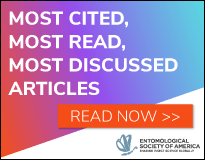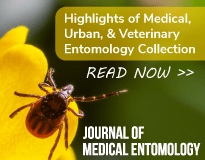Study Shows Leaf Fertilizers to Be Toxic to Stingless Bees
Friesella schrottkyi, a stingless bee that is an important pollinator in the Neotropics, may be harmed by copper sulfate, which is used as fertilizer and as a fungicide. Photo by Sylvia Maria Matsuda.
By Andrew Porterfield
There’s been a lot of focus and scientific study on the population reductions of honey bees and other pollinators. Some possible causes that have been cited are:
– Solar storms
– Viruses
– Diesel Fumes
– Bacterial pathogens
– Selenium
– A fungus
– Fungicides
– Insecticides, especially those in the class known as neonicotinoids.
Now researchers may have found another possible cause: fertilizer. A new study from the Federal University of Vicosa in Brazil is likely the first to find that copper sulfate, when used as a leaf fertilizer, is lethal to the native Brazilian bee known as Friesella schrottkyi. In addition, the study, which was published in the Journal of Economic Entomology, found that sublethal exposure also affected the bee’s behavior.
Andrew Porterfield
In South America, copper sulfate is a common heavy-metal fertilizer, as opposed to North America and Europe, where it is primarily used as a fungicide, even by organic farmers. Such fertilizers are used heavily in tropical and subtropical regions of South and Central America, and are a source of micronutrients for growing plants. They are used at different stages of plant development, including vegetative-reproduction and fully reproductive stages, which increases the chances of the fertilizer’s interaction with pollinators.
“Copper sulfate has been used as a fungicide for quite some time,” wrote study co-author Raul Narciso Guedes. “In Brazil the registration required for fungicides is far more restrictive than for fertilizers. As fungicide impact on bees has been recently receiving attention, we realized that leaf fertilizers have been neglected and the heavy metal content is relatively high, justifying a concern with bees.”
Stingless bees are the prevailing wild pollinators in this region and are more efficient than honey bees, which is partially why the researchers chose to study the effects of copper sulfate on Friesella schrottkyi.
“This is a rather tame and fragile species common in our region, and it is very important as a tree pollinator in the Neotropics,” Dr. Guedes said. “Its frequent occurrence and importance as a pollinator in the region, together with the fact that they frequently build their nests close to human dwellings, sparked our attention.”
To better understand how copper sulfate applications might affect Friesella schrottkyi, the researchers collected four beehives and observed the activity of adult worker bees. Two commercial leaf fertilizers common to Brazil were tested, including copper sulfate (with 24 percent sulfur), and a micronutrient mix that contained much smaller concentrations of heavy metals. The bioinsecticide spinosad was used as a positive control because it’s well known to be lethal to bees.
The researchers were surprised to find that, under oral exposure, the copper sulfate fertilizer killed all the test bees within 72 hours, and was more lethal than the spinosad control. Copper sulfate and spinosad also led to the bees eating twice as much food as non-exposed bees, further underscoring the risk of exposure to copper sulfate. Take-off and flight activity was also much higher for workers exposed to copper sulfate. Simple contact with copper sulfate (such as brushing on legs) did not result in such severe effects, but did continue to increase food ingestion.
“This could have implications for growers who use copper sulfate as a leaf fertilizer, and as a fungicide,” Dr. Guedes said.
“When considering agricultural production as a potential threat to Neotropical stingless bees, the problems likely go beyond pesticide use,” the authors wrote. “Leaf fertilizers seem to deserve attention and concern regarding their potential impact on native pollinators, notably Neotropical stingless bees such as F. schrottkyi.”
Read more at:
Andrew Porterfield is a writer, editor and communications consultant for academic institutions, companies and non-profits in the life sciences. He writes frequently about agriculture issues for the Genes and Science. He is based in Camarillo, California. Follow him on Twitter at @AMPorterfield on Twitter, or visit his Facebook page.


I appreciate all of this info. I just planted several new fruit trees and was all geared up to fertilize them, but after reading this, I’m going to just leave them alone. Thanks!